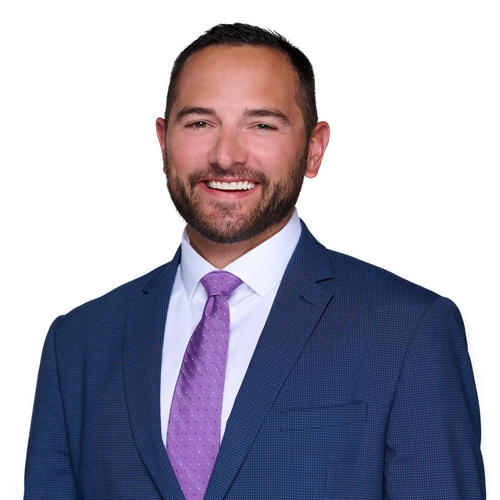Retirement planning and financial management can often seem like a game of chess, where every move impacts the ones to follow. This article will discuss how high-income earners can save on taxes by utilizing a variety of investment, rollover, deferral, and deduction strategies.
When looking at the bigger picture of our finances, we need to keep our AGI low to take advantage of more tax deductions. One of the easiest ways to do that is to reduce our taxable income. In this way, we can kill two birds with one stone by potentially bumping us down a tax bracket while simultaneously optimizing our tax deductions, thus significantly reducing our tax obligations. So, here’s how to keep your AGI low and reduce your taxable income.
Contribute to a qualified employer-sponsored retirement plan.
By qualified, we mean a plan that falls under the guidelines of the Employee Retirement Income Security Act of 1974. These plans, such as the 401(K), 403(B), and 457, allow you to deduct up to a certain amount from your taxable income each year. In 2023, you can deduct up to $22,500; if you are 50 or older, you can remove another $7,500 as a catch-up contribution.
Contribute to a Traditional IRA
Like a 401(K), you can deduct contributions to a traditional IRA, though there are phase-outs and floors if a workplace retirement plan covers you and you earn over a certain amount.
For example:
- A married couple filing jointly earning more than $116,000 but less than $136,000 will have a reduced deduction limit.
- A married couple filing jointly that earns more than $136,000 cannot deduct any of their contributions.
Otherwise, 2023 contribution limits for an IRA are $6,500 for those under age 50 and $7,500 for those age 50 or older. The IRS has a handy table here for other scenarios.
Defer your income
This may seem like a hail-mary approach, but if this year is a high-income year and you feel like next year won’t be as profitable, you can request your company to delay some of your compensation. They may say no, but unless you ask, the answer is always no.
Put into a Health Savings Account
If you qualify for a Health Savings Account, you can reduce your taxable income by nearly $8,000 if you file jointly as a married couple. If you don’t use them for qualifying medical expenses, they can be rolled right over to the following year, and your contribution limit will start over. Funds will grow tax-deferred, and after you turn 65, you can withdraw funds for any reason without the corresponding 10% penalty. Withdrawals for medical expenses will be tax and penalty-free at any age.
Create a 529 College Savings Plan
Contributions into a 529 Plan aren’t deductible at the federal level, but assets grow tax-free. So, if you want to invest in your child’s future, it’s better to let your investments grow in a tax-sheltered plan where your tax situation won’t be affected.
You also have the option to ‘superfund’ a 529, letting you contribute up to $80,000 into an account without gift tax consequences, kickstarting your child’s college savings while simultaneously removing assets from your taxable income.
Strategically time capital gains and losses
There are a few ways to reduce your AGI by timing when and how you claim the profits and losses of your investments.
Donate assets to a charity.
Imagine you bought some shares for $20 a few years ago, and now they are worth $100. You’d like to sell them and receive that profit, but doing so would push you up a tax bracket or increase your AGI to the point where you couldn’t take advantage of certain tax deductions.
So, instead of selling all those shares, you gift just enough to a charitable organization. Rather than paying a capital gains tax on the appreciated amount of the asset, you can instead claim a tax deduction on the current market value of the gift, giving you a bit more leeway on how you profit from other assets.
There are a few ways to donate to charity. You can make gifts to a donor-advised fund, take the tax deduction, and then direct the proceeds from the investments within the fund to charities of your choice over time. If your total annual charitable contributions don’t surpass the annual standard deduction threshold, you can simply make two years of deductions to do so.
Alternatively, you can create a charitable remainder trust, which gives you a partial tax deduction for the assets you place in its control, but still allows you to receive an income stream from the investments.
Finally, you can give a direct gift to a charity of your choice. Just be sure that it is a qualifying charitable organization so you can take advantage of the deduction and keep the receipt.
Harvest your losses
You can also deduct your investment losses from your overall taxable income. You can choose which assets are underperforming and which would give you the best deduction amount for your needs, sell that asset, and then claim the deduction. For this strategy to make sense, the loss in value should be compensated by the corresponding savings on your taxes.
If you don’t need to take advantage of your losses this year, you can also roll them forward for up to three years, which may come in handy if you’re on the edge of dropping a tax bracket.
Defer your capital gains.
Just because you turned a profit on your investment this year doesn’t mean you have to pay taxes on it immediately if you play your cards right. If claiming those profits means a higher tax bracket or AGI, you may want to look into deferral strategies. Here are a few to consider:
- 1031 Exchange
Suppose you have sold a piece of investment property. In that case, you can execute a 1031 exchange, which lets you take those capital gains and purchase another investment property of equal or greater value. Alternatively, you can take your profits in installments, dripping them into your taxable income over a few years rather than all at once.
- Roll over gains into a Qualified Opportunity Fund (QOF)
You have 180 days to invest capital gains profits into a QOF to take advantage of a deferral on their taxation. You can defer taxes on those gains until December 31st, 2026, or until the fund is sold or exchanged, whichever comes first.
A Qualified Opportunity Fund is an investment fund that pours money into Opportunity Zones, essentially economically distressed areas of the country, in an attempt to revitalize the local economy.
Keep in mind, though, that the Tax Cut and Job Act (TCJA), which created QOFs, is set to expire in 2025, which may lead to higher capital gains tax rates.
How business owners can reduce their taxes
America has always championed the entrepreneurial spirit, and its tax code is no exception. Business owners have a host of deductions and credits at their disposal — some well-known, others less so. Here are a few key ones we feel you should discuss with your tax professional.
The Pass-Through Deduction
Many business structures, such as sole proprietorships and partnerships, have what’s called ‘pass-through’ income, meaning that the business itself doesn’t pay income taxes but rather the owners or partners that profit from it. This provision, also created by the TCJA, provides a 20% business income deduction. Basically, if your income is $150,000, only $120,000 would be taxable after the deduction.
Like other deductions, deduction phase-outs begin after reaching certain income limits. In 2023, they are $182,100 for single filers and $364,200 for those married, filing jointly.
The Augusta Rule
In some cases, business owners can rent out their own home in the name of their business and count it as a business expense, which they can then deduct from their income. As always, there are a few rules. You can only rent out your home for 14 days per year and the rental price must be of a fair and standard market value. For example, you can’t rent out your own home for $10,000 a day if similarly sized homes in the area are rentable for $500 a day.
Hire your Children
This is a good lesson on teaching your children the values associated with employment such as hard work, responsibility, and integrity. It is also a good chance to deduct your children’s income as a business expense. At the same time, you can put their earnings into a Roth IRA, giving them a head start on their financial journey.
Delay invoices
If you have your own business, you may also want to delay sending out some invoices until the following year. For example, you may have a few invoices you need to send in at the end of December. If you feel the following year won’t bring in as much income, you may want to wait till after January 1st to receive payment for those invoices.
In Conclusion
These strategies should not be looked at as standalone methods but rather as pieces of a constantly changing puzzle. Carryovers, deferrals, and super funding methods mean that your tax strategy must plan for not just the here and now but also previous and future years.
Putting together a comprehensive investment and tax strategy is time-consuming, confusing, and incredibly difficult to accomplish independently. Partnering with a certified financial planner will not only save you time but also a significant amount of taxes over your lifetime.
Please note: While we strive to provide accurate and helpful information, we are not Certified Public Accountants (CPAs). The information in this article is intended for informational and educational purposes only and should not be interpreted as tax advice. It is crucial to consult with a CPA or tax professional to discuss your specific circumstances and understand how a tax strategy could impact your financial situation.
If you’d like a free assessment of your financial situation, click the button below.













